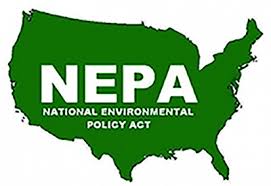LA River Supreme Court opinion: narrow or broad-reaching?

As Sean posted yesterday, the U.S. Supreme Court issued its rather short opinion in Los Angeles County Flood Control District v. NRDC. Rather unsurprisingly, the Court ruled that water that flows from an improved (channelized) portion of a river to an unimproved portion of that same river cannot be considered a “discharge of pollutants” under the Clean Water Act. No party nor amicus, to my knowledge, argued otherwise. The Court asked and answered a question with which no one disagreed.
So why take on this rhetorical exercise? A narrow interpretation of this opinion is that the Court basically wanted to put the Ninth Circuit in its place.
Here is Justice Ginsburg, writing for a unanimous Court*:
Whatever the source of the Court of Appeals’ error, all parties agree that the court’s analysis was erroneous.
The fact that this observation was in a footnote only enhances the rather casual way the Court disposes of the Ninth Circuit’s opinion. And perhaps this case is best seen as an instance of an appellate court screwing up an opinion so badly as to require Supreme Court oversight, but with facts so specific as to have little precedential value. In this case, the federal regulations make it clear that storm sewers (like the District’s MS4) do in fact discharge to rivers (that is why they are regulated). This obsession in the lower courts about whether the discharge occurs at or near a monitoring station misses the point completely. The real issue is not whether there was a discharge (there was) or whether the discharge contained pollutants (it did) but whether the District can be held liable for that Clean Water Act violation based solely on evidence from one monitoring station in LA River. It is hard to see how another case would ever turn on the question of where the discharge occurred in a storm sewer system. In point of fact, this case should not have turned on this issue either. But if that was all the Court wished to do, why not vacate and remand, instead of reverse and remand, to allow the Ninth Circuit to correct its error?
But there is a broader justification for the Court’s opinion: it reinforces the Miccosukee Tribe (2004) opinion. In Miccosukee Tribe, a water district pumped water runoff from a canal into a more pristine wetland. An environmental group and the Tribe thought pumping polluted water into the cleaner wetland should require a permit under the Clean Water Act. The water district first argued that it was merely conveying pollutants through the canal and point source, not generating pollutants, and therefore needed no permit. Justice O’Connor called that argument “untenable” (legalese for “stupid”) and the water district lost. Technically, that is the one and only holding in Miccosukee Tribe: point sources that convey pollutants may require NPDES permits.
But Justice O’Connor went on to consider various other legal theories that had little to do with the question on appeal. In particular, the EPA argued that the water district was engaged in a “water transfer” and that such transfers should be exempt from NPDES permitting under the Clean Water Act. At its heart, this water transfers theory basically says that transfers of water within a single “water body” (which could be broadly or narrowly defined) is a transfer exempt from permitting, not an addition of a pollutant to a navigable water that would require permitting. Sound familiar? The LACFCD v. NRDC case is the most trivial example of a water transfer, if one considers only the hypothetical question presented and not the actual facts of the case.
Now, EPA’s water transfers theory turned out to be a loser every time EPA raised it in court, until 2009. That is when EPA finally got around to making that water transfers theory a regulation. In 2009, the Eleventh Circuit, after listing the various rejections of the theory in prior cases, upheld the theory because the regulation entitled it to Chevron deference.
All of this legal wrangling concerning water transfers stem from Justice O’Connor’s diversion into water transfer theory in Miccosukee Tribe. In particular, the Supreme Court in its opinion yesterday seems to be affirming as a holding what was technically dicta in Miccosukee Tribe:
The Tribe does not dispute that if C-11 and WCA-3 are simply two parts of the same water body, pumping water from one into the other cannot constitute an “addition” of pollutants. As the Second Circuit put it in Trout Unlimited, “[i]f one takes a ladle of soup from a pot, lifts it above the pot, and pours it back into the pot, one has not ‘added’ soup or anything else to the pot.” 273 F.3d, at 492.
So the broader reading of yesterday’s opinion is that it expands and affirms Miccosukee Tribe. Despite never hearing arguments on point in any case to date, the Court has interpreted language in the Clean Water Act to exclude at least some types of “water transfers,” whereby polluted water can be dumped into cleaner water so long as we consider both to be from the “same” water body.
Anyone who wishes to strengthen the Clean Water Act should thus be wary of yesterday’s opinion. It may go down as one of the more boring Court opinions, but it could also be used to broaden the exemptions for NPDES permits and give support for EPA’s poorly thought-out water transfers rule.
* Justice Alito concurred in the judgment but wrote no concurrence that might elucidate what issue he had with Justice Ginsburg’s opinion.
Reader Comments
2 Replies to “LA River Supreme Court opinion: narrow or broad-reaching?”
Comments are closed.








Compare this decision to Coeur Alaska v. Southeast Alaska Conservation Council. There the Court held that filling a lake was a section 404 event and that categorical standards for gold mining did not apply to 404 discharges. But – the Court assured us – that was OK because 402 requirements and categorical discharge limitations would apply if the waters were released from the lake. This seems to be completely inconsistent with the Los Angeles decision.
Compare this decision to Coeur Alaska v. Southeast Alaska Conservation Council. There the Court held that filling a lake was a section 404 event and that categorical standards for gold mining did not apply to 404 discharges. But – the Court assured us – that was OK because 402 requirements and categorical discharge limitations would apply if the waters were released from the lake. This seems to be completely inconsistent with the Los Angeles decision.